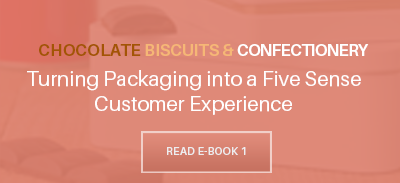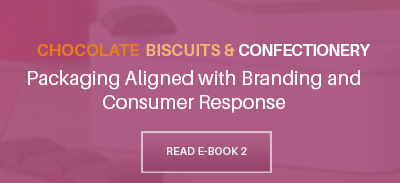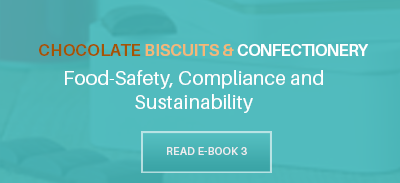There are many factors that go into creating food packaging. Creating an acceptable package takes a lot of work and creating the ideal packaging for a product takes a huge amount of time. The design process needs to consider both design and non-design factors, along with who the intended consume is and any unique specifications for the product. Additionally, producers should be versed in government regulations for where the product will be sold. The most important regulations have to do with product labeling and ability to protect the product from contamination. The European Union and USA have strict guidelines for these topics and should be reviewed prior to packaging production [1,2].
Design factors are what the consumer sees and are found on the exterior of packaging. They are usually one of the most influential ways to create consumer interest in a product. This is where knowing the intended market is incredibly important because different groups of people often hold different priorities and desires for what they use. Package design in separated into two categories: visual and informational. Visual encompasses color, shape, and artwork, while informational is labels and text used to convey product messages [3].
 Visual topics grab the consumer’s interest. This can be done by using unique or interesting colors and artwork. Some studies suggest different colors cause the brain to react in different ways. In packaging this can be used to subtly influence consumer choices, like how Apple uses white on their package design. White conveys the idea of simplicity and ease of use, which is one of Apple’s main selling points [4]. Another point to consider is having a unique and catchy logo to help develop a brand and longtime user base. Studies have also indicated that most people decide on which product to buy when they are at the point of purchase. This means that standing out from the competition is extremely important. Using a unique package shape, elegant design, collectability, or multipurpose package are just a few of the ways to beat the competition [5].
Visual topics grab the consumer’s interest. This can be done by using unique or interesting colors and artwork. Some studies suggest different colors cause the brain to react in different ways. In packaging this can be used to subtly influence consumer choices, like how Apple uses white on their package design. White conveys the idea of simplicity and ease of use, which is one of Apple’s main selling points [4]. Another point to consider is having a unique and catchy logo to help develop a brand and longtime user base. Studies have also indicated that most people decide on which product to buy when they are at the point of purchase. This means that standing out from the competition is extremely important. Using a unique package shape, elegant design, collectability, or multipurpose package are just a few of the ways to beat the competition [5].
Labeling is also a factor that should be considered. After a consumer’s interest is grabbed by a product the labeling is the next thing typically viewed. Beyond just meeting government regulations it is integral that the label is clear and easy to read. A cluttered and confusing label can easily deter even the most interested consumers. The label is also the area where any unique or important qualities of the product can be described [3]. Things like product awards, quantity, and quality should be highlighted.
 Non-design factors are important for meeting government requirements and maintaining the product color, taste, freshness, and smell. The first aspect to consider is packaging material. This is largely decided based on the product properties, such as acidity or perishability. Metals like tin and aluminum are popular choices for most food products because they offer goods strength, resistance, and recyclability. Plastic is also a popular choice for cheaper, disposable designs [6]. In addition to packaging material an internal coating is used. These prevent any migration of chemicals from the packaging into the food and from the food onto the packaging. This is important in limiting any contamination that can cause health issues or alter the product quality. Coatings are currently mostly made of epoxy-based resins, but research is being done to find alternatives [7]. In conjunction with packaging materials types of product seals are also used. A seal creates a physical barrier between the product and any openings in the package. The type of material, shape, and possibility of resealing should all be considered in this choice.
Non-design factors are important for meeting government requirements and maintaining the product color, taste, freshness, and smell. The first aspect to consider is packaging material. This is largely decided based on the product properties, such as acidity or perishability. Metals like tin and aluminum are popular choices for most food products because they offer goods strength, resistance, and recyclability. Plastic is also a popular choice for cheaper, disposable designs [6]. In addition to packaging material an internal coating is used. These prevent any migration of chemicals from the packaging into the food and from the food onto the packaging. This is important in limiting any contamination that can cause health issues or alter the product quality. Coatings are currently mostly made of epoxy-based resins, but research is being done to find alternatives [7]. In conjunction with packaging materials types of product seals are also used. A seal creates a physical barrier between the product and any openings in the package. The type of material, shape, and possibility of resealing should all be considered in this choice.
 Since food products are produced in such a wide variety of ways, with unique properties, and require strict packaging conditions there are a huge range of additional features that can be added. Just like for the rest of the package these have to be implemented on a product by product basis. One common example is biodegradable coatings that are sprayed onto fresh fruit and vegetables. They help maintain moisture and limit contact between oxygen and the food. For dry goods moisture absorbers are great for reducing air humidity and helping prolong their shelf life [8,9]. Some grab and go products add utensils and even plates inside of their packaging to promote their all-in-one meal image]. These are a few examples of a near unlimited number of additional things that can be used in food packaging. They provide innovate ways to interest consumers in a product and to protect product quality in challenging environments.
Since food products are produced in such a wide variety of ways, with unique properties, and require strict packaging conditions there are a huge range of additional features that can be added. Just like for the rest of the package these have to be implemented on a product by product basis. One common example is biodegradable coatings that are sprayed onto fresh fruit and vegetables. They help maintain moisture and limit contact between oxygen and the food. For dry goods moisture absorbers are great for reducing air humidity and helping prolong their shelf life [8,9]. Some grab and go products add utensils and even plates inside of their packaging to promote their all-in-one meal image]. These are a few examples of a near unlimited number of additional things that can be used in food packaging. They provide innovate ways to interest consumers in a product and to protect product quality in challenging environments.
As with all types of packaging food packaging needs to be designed based on the product properties, shipping conditions, storage environment, and consumer desires. Basic packaging design can be used for multiple products, but it will often not be ideal. If a package is produced for a specific product or type of product it is usually much better, but often more expensive to design. Companies need to determine if designing unique packaging is cost effective for them and if there are any generic options that will function well. That considered it is usually better to have a package specifically designed for a product.
References
[1] "Food contact materials - legislation" (retrieved April 2019), by European Commission.
[2] "Food Packaging Regulation in the US (2013)", by Charlotte Wagner.
[3] "The Importance of Packaging Attributes: a Conjoint Analysis Approach.” (2007), Pinya Silayoi and Mark Speece.
[4] "Packaging colors" (retrieved April 2019), by empower-yourself-with-color-psychology.com.
[5] "The influence of package design on consumer purchase intent" (2018), by Angela Fraser.
[6] “Food Packaging -- Roles, Materials, and Environmental Issues” (2007), by Kenneth Marsh and Betty Bugusu.
[7] "Can coatings", (2016) by Birgit Geueke.
[8] "Recent Advances on Edible Films Based on Fruits and Vegetables—A Review" (2017), by Caio G. Otoni, Roberto J. Avena‐Bustillos, Henriette M. C. Azeredo, Marcos V., Lorevice, Márcia R., Moura, Luiz H. C. Mattoso, and Tara H. McHugh.
[9] "Moisture absorbers for food packaging applications" (2018), by Gaikwad, Kirtiraj & Singh, Suman & Ajji, Abdellah.






